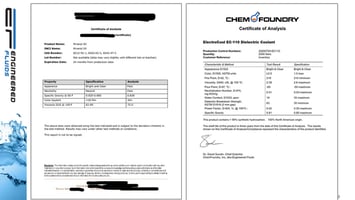“Let’s go to the electronics store and we’ll use whatever memory they have on sale today” said no...
Preparing Servers for Immersion Cooling
We often get questions about how to prepare servers for immersion cooling. The process is simple and straightforward, and only involves four steps:

1. Air Baffling: Remove any internal baffling that may exist inside the server that will impede the flow of the coolant. These are often plastic parts that are installed to guide high speed air through the server. These are not necessary and actually impede the fluid flow.
2. Hard Disks: Check any spinning hard drives and make sure they are sealed drives or remove them and replace with SSDs. Spinning drives have vent holes that allow the fluid into them, they won’t be harmed electronically but the platters and drive reading arms are not designed for the increased friction of the fluid.
3. CPUs and Thermal Paste: You’ll want to remove the heat sinks from all chips (CPUs, FPGAs, ASICs, GPUs, etc.) that are not epoxied to the chips, and then clean off and remove the thermal paste (typically it's grey or white in color). To completely remove the grease you can use Windex or other alcohol based cleaners. You should replace the thermal paste with either thermal epoxy (https://www.masterbond.com/tds/ep48tc) or indium (https://www.indium.com/thermal-interface-materials/heat-spring/). Our coolants will act as a solvent with the standard thermal greases and break them down; this will discolor the coolant and it will also decrease the dielectric strength of the coolant as most thermal epoxies contain conductive metallic particles.
4. Fans: If possible, remove as many fans as possible. They are not effective at moving the coolant and only waste energy. This may require a change in the BIOs to eliminate any alarms or automatic shut downs that occur when the fans are not present or cycling below their intended rotational speed. It may not be possible to shut off the fans on the power supplies, generally this isn’t a problem, so its ok to allow the PSU fans to run in fluid.
So there you have it; preparing servers (or any other equipment) for immersion cooling isn’t difficult or complicated. If you have any questions, contact Engineered Fluids (support@engineeredfluids.com) and we’ll be glad to help you!



